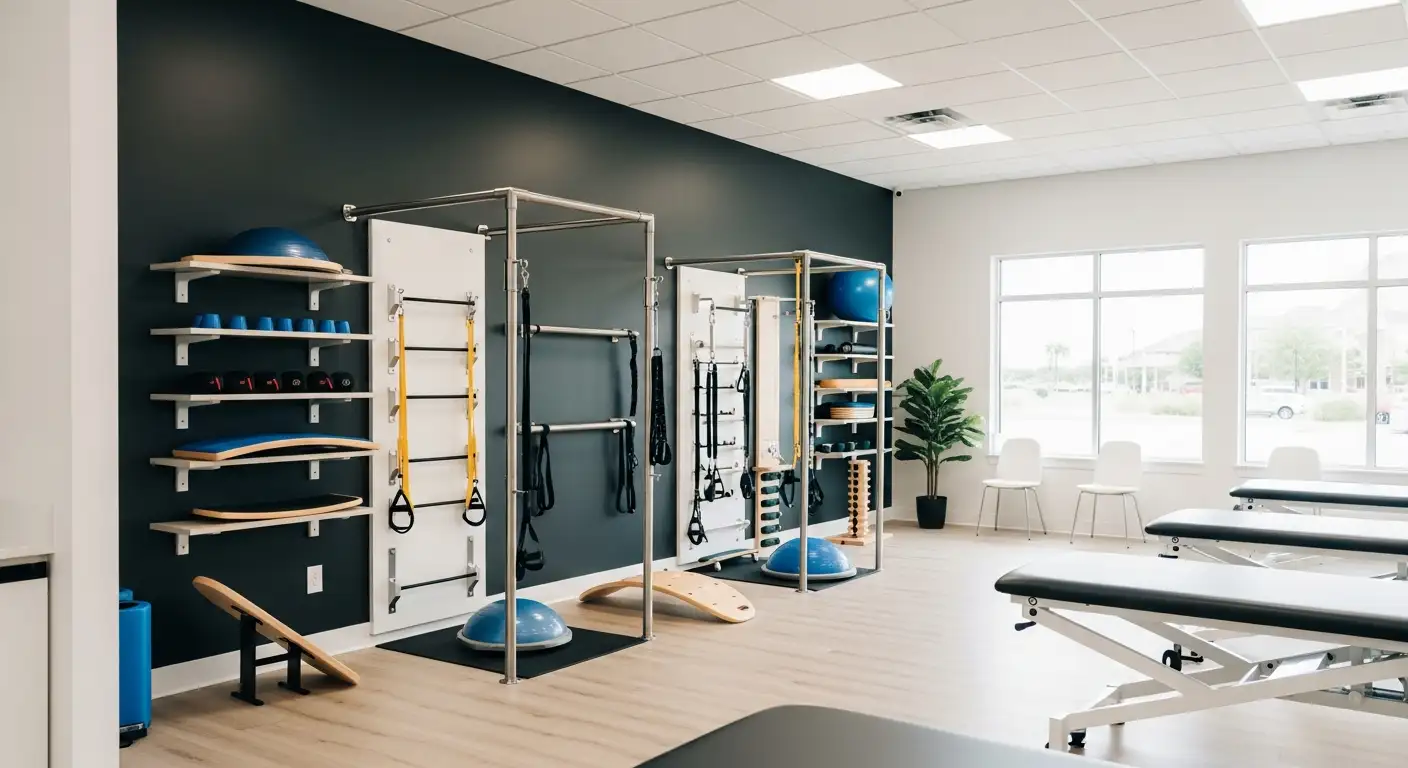Understanding Knee Swelling
Knee swelling, a common symptom, refers to a buildup of fluid in or around the knee joint. This condition can result from various causes, including traumas like sports injuries or health conditions such as arthritis. It's important to understand the anatomy of the knee and the potential causes of swelling, especially in cases of a swollen knee without injury.
Anatomy of the Knee
The knee is the largest joint in the body, connecting the thigh bone (femur) to the shin bone (tibia) and the kneecap (patella). It contains several components, including cartilage for smooth movement, muscles for strength and mobility, ligaments for stability, and nerves for sensation. Traumatic knee swelling typically arises from injuries like sports injuries, while nontraumatic knee swelling is often due to health conditions affecting these components, like arthritis.

What Causes Knee Swelling?
Swelling in the knee without injury can be caused by medical conditions such as arthritis, infection, or gout, rather than a direct injury to the knee. This type of knee swelling is usually accompanied by other symptoms like redness, warmth, stiffness, and pain [2].
One common cause of knee swelling without injury is osteoarthritis, a degenerative joint disease that can lead to the breakdown of cartilage in the knee joint. This can result in inflammation, swelling, and pain in the knee joint [2].
Knee effusion, commonly known as water on the knee, is a condition where excess fluid accumulates within or around the knee joint and can cause swelling without an injury. This condition can be a result of trauma, infection, inflammatory conditions, or overuse.
Other causes of a swollen knee without injury may include bursitis, cysts, or a Baker's cyst, which is a fluid-filled swelling behind the knee [3].
A swollen knee without injury can also be a sign of an underlying medical condition, such as an infection, arthritis, or gout. Seeking medical evaluation is crucial to determine the cause and appropriate treatment.
Inflammatory arthritis such as rheumatoid arthritis can lead to chronic knee swelling, joint stiffness, and pain [4].
Understanding the causes of knee swelling is key to effective treatment and management of this condition. If you experience a swollen knee without injury, it's crucial to seek medical attention to identify the underlying cause and receive appropriate treatment.
Non-Traumatic Knee Swelling
Swelling in the knee without an apparent injury can be perplexing, but it's usually a sign of an underlying condition. Understanding the cause of the swelling is crucial for effective treatment. Common causes include arthritic conditions and infections.
Arthritic Conditions and Swelling
Arthritis is a common cause of knee swelling without injury. Arthritic conditions such as osteoarthritis, a degenerative joint disease that can lead to the breakdown of cartilage in the knee joint, may result in inflammation, swelling, and potential discomfort in the knee joint [2].
Inflammatory arthritis, such as rheumatoid arthritis, can also lead to chronic knee swelling. This condition affects multiple joints in the body, including the knees, leading to joint stiffness, and pain [4].
Besides, gout and pseudogout, forms of arthritis caused by crystal deposits within the knee joint, can cause sudden and severe swelling without a preceding injury [3].

Infections and Knee Swelling
Infections can also result in a swollen knee without injury. Bacterial infections can cause knee joint inflammation, leading to swelling, redness, warmth, and pain.
Bursitis, inflammation of the small fluid-filled sacs that cushion the outside of the knee joint, can also trigger knee swelling. This inflammation can be due to repeated overuse or injury to the knee [3].
In some cases, knee swelling may be due to a Baker's cyst, a fluid-filled swelling behind the knee. It is usually a result of a knee joint condition, such as arthritis or a tear in the knee cartilage.

Understanding the potential causes of knee swelling without injury helps in identifying the suitable treatment and preventive measures. Consulting a healthcare provider for an accurate diagnosis and treatment plan is vital if you experience a swollen knee without injury.
Diagnosing Swollen Knees
In the case of a swollen knee without injury, identifying the cause of the swelling is crucial to determine the appropriate course of treatment. The diagnostic process typically involves a combination of physical examination, imaging tests, and laboratory tests.
Importance of Physical Examination
A physical examination is often the first step in diagnosing a swollen knee. During the examination, a healthcare provider will evaluate the knee for signs of inflammation and assess the range of motion. They will also check for areas of tenderness or warmth, which can indicate an underlying infection or inflammation. The physical examination provides valuable information about the condition of the knee and helps guide the next steps in the diagnostic process [2].
Role of Imaging and Laboratory Tests
In addition to the physical examination, imaging tests such as X-rays, MRI scans, or ultrasound can provide detailed images of the knee structure and help identify any abnormalities. These tests can reveal signs of arthritis, fractures, or other conditions that might be causing the knee swelling.

Laboratory tests, including blood tests and joint aspiration, can provide further insights into the cause of knee swelling. Blood tests can help rule out infections, gout, or pseudogout, while joint aspiration involves extracting a small amount of fluid from the knee for analysis. This procedure can determine whether the swelling is due to an infection, inflammation, or a condition such as gout [4].
By combining the information gathered from the physical examination, imaging tests, and laboratory tests, healthcare providers can accurately diagnose the cause of a swollen knee without injury and devise an appropriate treatment plan.
Treating Swollen Knees
When dealing with a swollen knee without injury, it's important to understand that the treatment will depend on the underlying causes. A combination of at-home remedies and medical interventions may be necessary to address the swelling and alleviate any discomfort.
At-Home Remedies for Swelling
For immediate relief from knee swelling, the RICE method is often recommended. This involves Rest, Ice, Compression, and Elevation. Resting the knee helps to reduce further strain on the joint. Applying ice to the swollen area can help to reduce inflammation and numb the pain. Compression, such as wearing a compression bandage or knee brace, helps to reduce swelling and provide support. Elevating the knee helps to reduce the build-up of fluid that leads to swelling. Over-the-counter pain relievers can also be used to manage any associated pain.
Medical Interventions for Swelling
Medical interventions for a swollen knee without injury can vary depending on the underlying cause identified by healthcare professionals. In some cases, physical therapy might be recommended to strengthen the muscles around the knee and improve its overall function.
Medications can also be used in the treatment of knee swelling. These may include pain relievers, anti-inflammatory drugs, corticosteroids, or antibiotics if an infection is present. In some cases, a procedure known as joint aspiration may be performed where a needle is used to drain excess fluid from the knee joint.
In more severe cases where knee swelling is the result of an injury like a torn ligament or meniscus tear, surgery such as knee arthroscopy might be needed to repair the damage inside the knee. If arthritis symptoms like swelling and pain hinder everyday activities, knee replacement (arthroplasty) could be recommended.
In conclusion, treating a swollen knee without injury involves a combination of at-home care and medical treatments. It's crucial to consult with a healthcare provider to determine the most suitable treatment plan based on the specific cause of the swelling. Incorporating safe practices for physical activities and maintaining a healthy weight are also key preventive measures to avoid knee swelling.
Red Flags in Knee Swelling
While a swollen knee without injury may seem less concerning than one with obvious trauma, it's important to be aware of certain red flags. These symptoms can indicate serious conditions that require immediate medical attention.
Symptoms Requiring Immediate Attention
Certain signs of a swollen knee should not be ignored. According to the Mayo Clinic, these include:
- Inability to fully extend or flex the knee
- Significant pain
- Redness
- Severe swelling
- Fever
- Inability to bear weight
If these symptoms are present, immediate medical attention is necessary.
Furthermore, Healthline adds that persistent swelling, redness, warmth, fever, or severe pain also mandate prompt healthcare consultation.
Other accompanying symptoms that are of concern, as per the Mayo Clinic, include stiffness, weakness, and difficulty bearing weight on the affected knee.
Lastly, Cleveland Clinic advises that healthcare providers should be consulted promptly if swelling is accompanied by severe pain, inability to move the knee, or if at-home treatments do not lead to improvement within a few days. In cases of trauma or injury, immediate medical attention is necessary.
Potential Complications of Knee Swelling
If left untreated, a swollen knee can lead to serious complications. According to the NCBI, urgent conditions that cause generalized knee swelling include fractures, infections such as abscess and septic arthritis, and malignancy of the musculoskeletal system. These conditions require timely specialist referral and likely surgical intervention.
As such, it's imperative to seek medical attention if you notice any of the above-mentioned symptoms or if your knee swelling persists. Early diagnosis and treatment can help prevent complications and promote a smoother recovery.
Preventive Measures for Knee Swelling
While treating a swollen knee without injury is essential, taking steps to prevent knee swelling in the first place can save you from discomfort and potential complications. Two crucial areas for prevention include safe practices for physical activities and maintaining a healthy weight.
Safe Practices for Physical Activities
Engaging in physical activities is necessary for overall health, but it's important to follow safety guidelines to minimize the risk of knee injuries and subsequent swelling. According to Cleveland Clinic, these guidelines include wearing appropriate protective gear, warming up before exercising, and using correct techniques during sports.
Additionally, it is recommended to exercise regularly to strengthen the muscles around the knee joint and maintain flexibility. This can help provide stability and support to the knee, reducing the risk of swelling and injuries [3].
Moreover, Healthline emphasizes the importance of using proper form and technique during physical activities. It is equally important to avoid overexertion and listen to your body's signals to prevent injuries that can lead to swelling.
Maintaining Healthy Weight
Maintaining a healthy weight is crucial in preventing knee swelling. Excess weight can put additional stress on the knees and increase the risk of developing conditions like osteoarthritis that can cause knee swelling.
Additionally, maintaining a healthy weight can help reduce stress on the knees and prevent knee swelling, especially for those with arthritis.
This can be achieved through a balanced diet and regular exercise, which can help manage weight and strengthen the muscles that support the knees, further contributing to the prevention of knee swelling.
In conclusion, preventive measures can go a long way in avoiding a swollen knee without injury. By adopting safe practices for physical activities and maintaining a healthy weight, you can keep your knees in good health and prevent swelling.
References
[1]: https://my.clevelandclinic.org/health/symptoms/17678-swollen-knee
[2]: https://www.verywellhealth.com/knee-swelling-2549489
[3]: https://www.mayoclinic.org/diseases-conditions/swollen-knee/symptoms-causes/syc-20378129
[4]: https://www.healthline.com/health/how-to-reduce-swelling-in-knee-quickly





